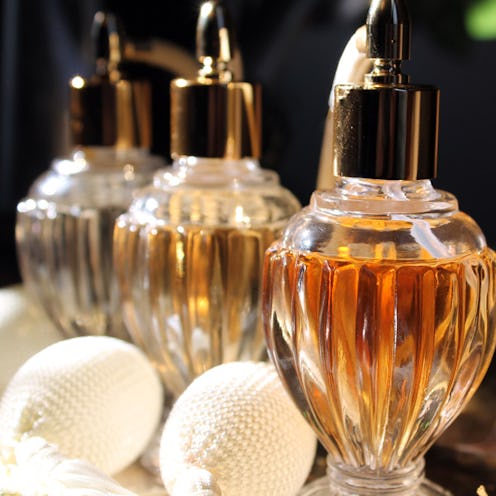
For almost a decade, my signature scent has been Fresh's Sugar Lemon Eau de Parfum. I would apply the scent liberally because it was so light I go really drench myself in it for longer-lasting wear. I didn't care about the price, because over the years I was fortunate enough to have several pals employed by Fresh and reaped the benefits of 50 percent off my orders. Eventually, my friends moved on and I was forced to make a very grave decision in anyone's life: I had to find a new scent. Clearly, this involved turning my kitchen into a science lab to make my own perfume.
Before I took the plunge at attempting a DIY perfume though, I subjected my nose to several unfortunate scents. I tried high-end brands that everyone wore — they were just as pricy as my Fresh scent, but I found I was able to get more for my buck. This ended in horrible sneezing attacks. OK, I thought, this isn't my scent. Then, I tried to go the all-natural brand route. I was surprised by the cost, but figured I had to bite the bullet. If I wasn't self-conscious about the adorable rashes that broke out wherever I dabbed the liquid, I was certainly paranoid that I smelled like a hippy. Why is patchouli in EVERYTHING?
To be honest, I knew I was just putting off the inevitable. I was too scared to attempt to make my own fragrance. Once I looked at the investment finding that new fragrance had cost me, I was ready for the challenge.
So... turns out? It was incredibly easy! Not only that, but my new scent was going to cost me only a fraction of the cost to make. Once I understood the complicated nature of fragrance making — which I won't bore you with — I nodded my head and thought "OR! I can NOT follow any of these directions and just hope for the best!" Fortunately, it worked out pretty well and I am pleased to share a DIY fragrance recipe that is so easy and cheap. May I suggest it as a pefect idea for gift bags, now that holidays are coming up? The portions below are based off Overthrow Martha's wonderful DIY perfume recipe.
Here's what you'll need:
30-40 drops of Essential Oil
Essential oils are used in store bought perfumes at a much smaller ratio than what we'll be using. We're going to make a nice, potent scent with your favorite oils. If you want to blend your scents, creating a first impression note, a middle note, and a base note then get ready for some experimenting and frequent nose breaks. I chose to use lemongrass, jasmine absolute, and lavender oil.
2 Teaspoons of Carrier Oil
Yes y'all, ain't nobody tryin' to get a rash up in here. You'll want to dilute your scent just like you would dilute any potent essential oils. Choose your carrier oil wisely: This will be one of the few times I don't run to coconut oil as I want an oil that has little to no scent. Jojoba oil works wonderfully.
2 Teaspoons of Distilled Water
Don't even try to sneak in tap water. It's just not going to work.
4 Teaspoons of Witch Hazel
Witch hazel ensures your new scent doesn't go bad, but most importantly it's the alcohol content necessary for your new body spray.
Dark Container For Storage
I'm all about keeping this scent fresh and as any all-natural gal knows, essential oils like to be stored in dark containers.
The quickest way to smelling good naturally will be to mix all your goodies in your bottle and shake, shake, shake!
If you want to make a long-lasting scent — and have a few extra minutes to spare — mix your essential oils together first and then add your carrier oil and witch hazel to the mix. The cleanest way to transfer the liquids into your storage bottle is via funnel. Next, shake your bottle and body like crazy!
Here comes the sad news: You want to leave your new fragrance alone for at least 48 hours to allow the scents to settle and become more potent. Once you've stared at the bottle for two days straight, add the distilled water directly into the bottle.
Viola! You've successfully made your own signature scent, which, as everyone knows, is the first step to celebrity status.
Image: Giphy; Vetiver Aromatics/Flickr; Kristin Collins Jackson